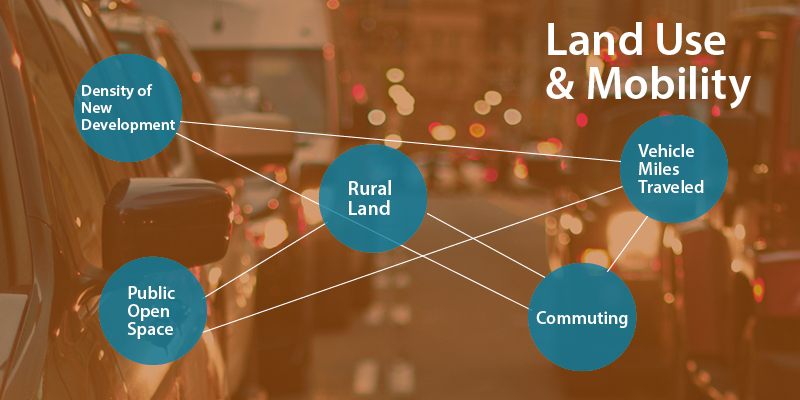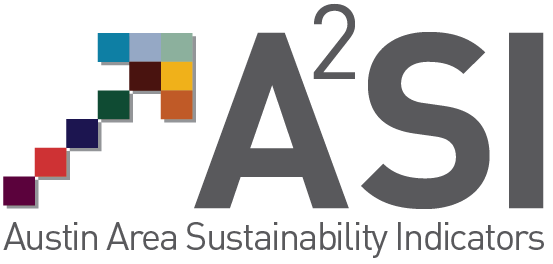Land Use & Mobility
The land use and mobility of a region reflects both quality of life and economic well-being. Longer commute times, congestion, and commuter stress can be indicative of a spatial mismatch between jobs and housing – a phenomenon that can especially impact low-income households, as their geographic mobility may be limited. On the flip side, access to parks and open space provide a myriad of recreational activities and physical health opportunities for users. Green space proximity has an effect on public health, quality of life, and general well-being. The land use and mobility indicator section outlines these characteristics of sustainability in the Austin area. Key indicators include: density of development; rural land and public open space; commuting and congestion; and public transit.

Key Indicators
Housing Density
Residential housing density has been increasing in the Austin-Round Rock, TX for many years. Between 2012 and and 2017, residential housing density has increased from 157.53 occupied housing units per square mile to 178.94 units per squared mile. This is apporximately an addition of 90,200 housing units added and occupied.
Public Perceptions of Urban Growth
A growing percentage of Austin Area residents disagree that “we have plenty of room for growth.” Residents who live in Rural and Rural changing to Suburban areas were more likely to agree with the statement, however, at approximately 47%.
Peak Travel Time Congestion
The Austin Area is home to 14 of the most congested roadways in the State of Texas. This includes three sections of I-35 that run through the City of Austin: downtown (ranked 3rd), south of downtown (19th), and north of downtown (36th). The estimated annual congestion costs of these three sections alone is over $315,000,000.
Perceptions of Transit
According to the 2018 A2SI Community Survey, 54% disagree that they can travel around the metro area in a reasonable amount of time and nearly 50% of Austin Area residents agree that “A better commute or more travel options would significantly impact my quality of life”.
Most Congested Roadways in Texas
Source: Texas A&M Transportation Institute
Thinking about the land use and mobility section, some questions to consider:
- What are the implications of the commuter stress index on health-related outcomes?
- How can we encourage more use of public transportation?
- How can we shape land-use and development patterns in ways that sustain the ecosystem services of the region that we depend on?
